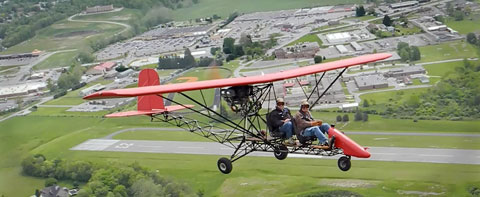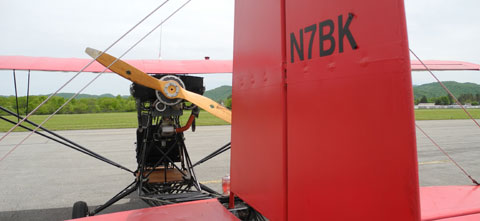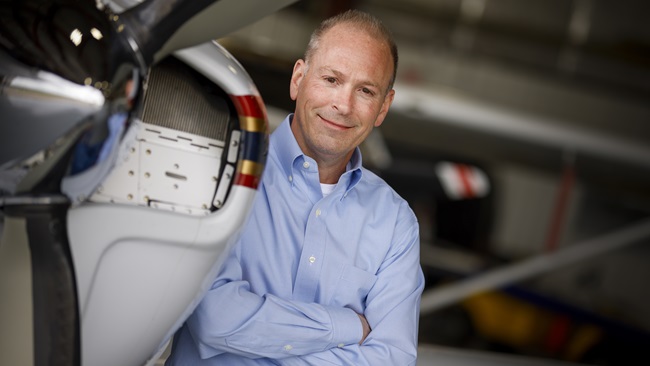The lore goes that the Breezy became known as the “ naked airplane” after the pilot unknowingly made an unscheduled landing in a nudist camp. The aircraft drew quite a crowd among the nudists who noted that the homebuilt “… looks like us. It’s got nothing on.”
Fair enough. In fact, the skinless airplane does look a little naked, with its pilot and single passenger sitting in the breeze with no structure around them. Behind, a wing and tail section from any number of potential donors (Champ, Cub, Taylorcraft) supports the Experimental airplane that is powered typically by a four-cylinder Lycoming in a pusher configuration. The “fuselage” is a simple tube structure that keeps all the parts in tandem.
A photo on a calendar of designer Carl Unger flying the unusual airplane at the EAA Convention (now AirVenture) captured the imagination of former naval aviator and best-selling novelist Stephen Coonts, which led him on an adventure to have one for himself.
Two decades later, Coonts still flies what he calls the Witch’s Broom and on a recent spring Saturday drew a crowd at the fiftieth anniversary celebration of the Elkins Pilots Club in West Virginia, not far from his 1,700-acre farm where he has carved out an impressive grass strip that suits the Breezy just fine.
Coonts’ Breezy uses a set of Champ wings and tail for its flying surfaces; others use surfaces from a variety of similar aircraft. First designed and flown in 1964 by Unger and co-designers Charley Roloff and Bob Liposky, the airplane became best known for the 7,000-plus rides that Unger hopped over the decades at the EAA annual gathering. It was Unger who landed innocently enough on a tree-lined strip near Chicago, only to find that it was in a nudist camp. As Unger relates, one of the first passengers ever on a Breezy was a woman from the camp wearing nothing but a pair of sandals.

Hey, keep that mental visual to yourself, OK?
Like Unger, Coonts delights in giving rides in the venerable Breezy that cruises at 65 mph—a speed that doesn’t seem quite so leisurely when you’re feeling the full blast of it in your face. First-time pilot riders generally spend the flight gripping the sides of the seats, Coonts says (and your author can confirm!). The lack of structure around the seats strikes fear into the hearts of pilots used to being surrounded by aluminum or composite cabins. Kids, though, take to it right away, Coonts notes (supported by reports from my kids who have flown with him and still talk about it years later).
While generally a breeze to fly, Coonts warns that the airplane is incredibly draggy, meaning that abrupt reductions in power result in tremendous descents in a hurry. It’s one airplane that is particularly unforgiving to those who get behind the power curve.

For Coonts, the Breezy is the perfect airplane for plunking around his West Virginia neighborhood, enjoying the unobstructed vistas of the Mountain State.
Think you’d like to do the same? Aircraft Spruce & Specialty, among others, still supports the model and plans are available. For more information, see the Breezy Aircraft website.



